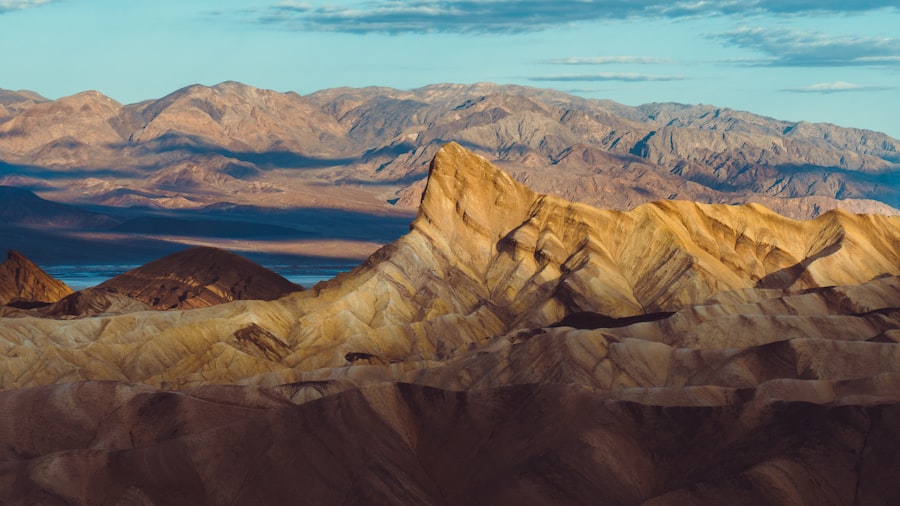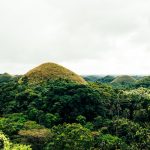Download links
How to install Discover the Enchanting Beauty of Chocolate Hills APK?
1. Tap the downloaded Discover the Enchanting Beauty of Chocolate Hills APK file.
2. Touch install.
3. Follow the steps on the screen.
Description
The Chocolate Hills, a geological marvel located in the heart of Bohol, Philippines, are a striking natural formation that captivates visitors with their unique appearance and intriguing origin. Comprising approximately 1,268 to 1,776 symmetrical hills, these formations rise abruptly from the surrounding landscape, creating a surreal panorama that resembles a sea of chocolate mounds. The hills are primarily composed of limestone, which has been shaped over millennia through a combination of erosion and weathering processes.
This distinctive topography is a result of the region’s geological history, where the uplift of coral deposits and subsequent erosion by rainwater sculpted the hills into their current form. The most remarkable feature of the Chocolate Hills is their seasonal transformation. During the dry season, the grass covering the hills turns a rich brown hue, giving them the appearance of giant chocolate drops scattered across the landscape.
Conversely, during the rainy season, the hills are cloaked in vibrant green vegetation, creating a stark contrast that highlights their unique shapes. This seasonal change not only enhances their visual appeal but also contributes to the local ecosystem, supporting various plant and animal species that thrive in this diverse environment. The Chocolate Hills have been designated as a National Geological Monument and are also included in the UNESCO World Heritage Tentative List, underscoring their significance as a natural wonder.
Key Takeaways
- The Chocolate Hills are a geological wonder consisting of over 1,200 cone-shaped hills in the Philippines.
- The area surrounding the Chocolate Hills is home to a diverse range of flora and fauna, including the tarsier, one of the world’s smallest primates.
- The Chocolate Hills hold cultural significance to the Filipino people, with legends and folklore surrounding their formation.
- Visitors can enjoy activities such as hiking, zip-lining, and ATV tours in the surrounding area of the Chocolate Hills.
- Conservation efforts are in place to preserve the natural beauty and biodiversity of the Chocolate Hills, including reforestation and sustainable tourism practices.
- When visiting the Chocolate Hills, it’s important to respect the environment, follow designated trails, and support local conservation initiatives.
Exploring the Flora and Fauna of Chocolate Hills
The biodiversity surrounding the Chocolate Hills is as fascinating as the geological formations themselves. The area is home to a variety of flora and fauna that thrive in the unique microclimate created by the hills. The vegetation primarily consists of grasses, shrubs, and some tree species that have adapted to the limestone-rich soil.
Among these are endemic plants that are specifically suited to the region’s conditions, contributing to the ecological richness of the area. The hills are dotted with wildflowers that bloom during certain seasons, adding splashes of color to the landscape and attracting pollinators such as bees and butterflies. In addition to plant life, the Chocolate Hills serve as a habitat for numerous animal species.
Birds are particularly abundant in this region, with various species nesting in the trees and shrubs that dot the hillsides.
These small creatures are nocturnal and are known for their large eyes and unique ability to rotate their heads almost 180 degrees.
The presence of such wildlife highlights the ecological importance of the Chocolate Hills and emphasizes the need for conservation efforts to protect these habitats from potential threats.
The Cultural Significance of Chocolate Hills to the Filipino People

The Chocolate Hills hold profound cultural significance for the Filipino people, particularly for the residents of Bohol. Local legends and folklore have woven these hills into the cultural fabric of the region, with stories passed down through generations. One popular legend tells of two giants who engaged in a fierce battle, hurling boulders at each other until they eventually grew tired and left behind these mounds as remnants of their conflict.
Such tales not only enrich the cultural narrative surrounding the hills but also foster a sense of identity and pride among local communities. Moreover, the Chocolate Hills have become an emblematic symbol of Bohol and the Philippines as a whole. They attract thousands of tourists each year, contributing significantly to the local economy and providing opportunities for cultural exchange.
Festivals and events celebrating local heritage often incorporate themes related to the hills, showcasing traditional music, dance, and crafts that reflect Boholano culture. This connection between natural beauty and cultural expression underscores the importance of preserving both the landscape and its associated traditions for future generations.
Activities and Attractions in the Surrounding Area of Chocolate Hills
| Activity/Attraction | Description |
|---|---|
| Adventure Park | An outdoor park with zip lines, rope courses, and other adrenaline-pumping activities. |
| Tarsier Sanctuary | A protected area where visitors can observe the endangered Philippine tarsier in its natural habitat. |
| Loboc River Cruise | A leisurely boat ride along the scenic Loboc River with lunch and live music on board. |
| Bilar Man-Made Forest | A picturesque stretch of mahogany trees planted by locals, perfect for nature walks and photography. |
| Butterfly Conservatory | A sanctuary for various species of butterflies, offering educational tours and interactive exhibits. |
Visitors to the Chocolate Hills can engage in a variety of activities that enhance their experience of this stunning natural wonder. One of the most popular attractions is the viewing platform located at the Chocolate Hills Complex, which offers panoramic views of the hills and surrounding landscape. From this vantage point, visitors can appreciate the sheer scale and beauty of the formations while capturing breathtaking photographs.
The complex also features educational exhibits that provide insights into the geological history and ecological significance of the area. For those seeking adventure, there are opportunities for hiking and biking along designated trails that wind through the hills and surrounding countryside. These trails allow visitors to immerse themselves in nature while enjoying fresh air and stunning vistas.
Additionally, nearby attractions such as the Loboc River offer opportunities for river cruises, where visitors can experience Bohol’s lush landscapes from a different perspective. Engaging with local communities through cultural tours can also provide deeper insights into Boholano traditions and lifestyles, enriching one’s understanding of this remarkable region.
Conservation Efforts to Preserve the Natural Beauty of Chocolate Hills
As awareness grows regarding environmental issues and climate change, conservation efforts aimed at preserving the natural beauty of the Chocolate Hills have become increasingly important. Local government units and environmental organizations have initiated various programs focused on sustainable tourism practices that minimize human impact on this delicate ecosystem. These initiatives include reforestation projects aimed at restoring native vegetation around the hills, which helps prevent soil erosion and supports local wildlife habitats.
Furthermore, educational campaigns targeting both locals and tourists emphasize responsible behavior when visiting natural sites. By promoting awareness about littering, wildlife protection, and respecting local customs, these efforts aim to foster a culture of conservation among visitors. Collaborations between government agencies, non-profit organizations, and local communities play a crucial role in ensuring that conservation strategies are effective and sustainable over time.
The ongoing commitment to preserving this geological wonder reflects a broader recognition of its value not only as a tourist destination but also as an irreplaceable part of Bohol’s natural heritage.
Tips for Visiting and Experiencing Chocolate Hills

When planning a visit to the Chocolate Hills, there are several tips that can enhance your experience and ensure a memorable trip. First and foremost, timing your visit is crucial; early morning or late afternoon offers softer lighting for photography while avoiding peak tourist hours. This allows for a more serene experience as you take in the breathtaking views without large crowds.
Additionally, visiting during the dry season from November to May will provide clearer skies and more vibrant colors in the landscape. Dress appropriately for outdoor activities; comfortable shoes are essential for hiking or walking along trails. Bringing water and snacks is advisable, especially if you plan to explore more remote areas around the hills.
Engaging with local guides can enrich your visit; they often share valuable insights about both the geological features and cultural significance of the area that you might not discover on your own. Lastly, consider extending your stay in Bohol to explore other attractions such as the Tarsier Sanctuary or Panglao Island’s beautiful beaches, making your trip an unforgettable adventure filled with diverse experiences that showcase both nature and culture in this enchanting part of the Philippines.
If you’re interested in exploring more about the Chocolate Hills in the Philippines, you may want to check out this article on Line APK 13.
0 download for Android, the latest version available. This app could be a useful tool for planning your trip to see the iconic natural wonders. You can read more about it here.
FAQs
What are the Chocolate Hills?
The Chocolate Hills are a geological formation in the Bohol province of the Philippines. They are made up of around 1,268 cone-shaped hills, which are covered in green grass that turns brown during the dry season, giving them the appearance of chocolate kisses.
How were the Chocolate Hills formed?
The exact formation process of the Chocolate Hills is still a subject of debate among geologists. However, it is widely believed that they are the result of the uplift of coral deposits and the action of rainwater and erosion over millions of years.
What is the best time to visit the Chocolate Hills?
The best time to visit the Chocolate Hills is during the dry season, which typically runs from late November to May. This is when the grass covering the hills turns brown, giving them their chocolate-like appearance.
Are there any activities to do at the Chocolate Hills?
Visitors to the Chocolate Hills can enjoy activities such as hiking, bird watching, and taking in the panoramic views from the viewing deck. There are also ATV tours and zip-lining available for those seeking a more adventurous experience.
Is there an entrance fee to visit the Chocolate Hills?
Yes, there is an entrance fee to visit the Chocolate Hills. The fee helps with the maintenance and preservation of the area.





